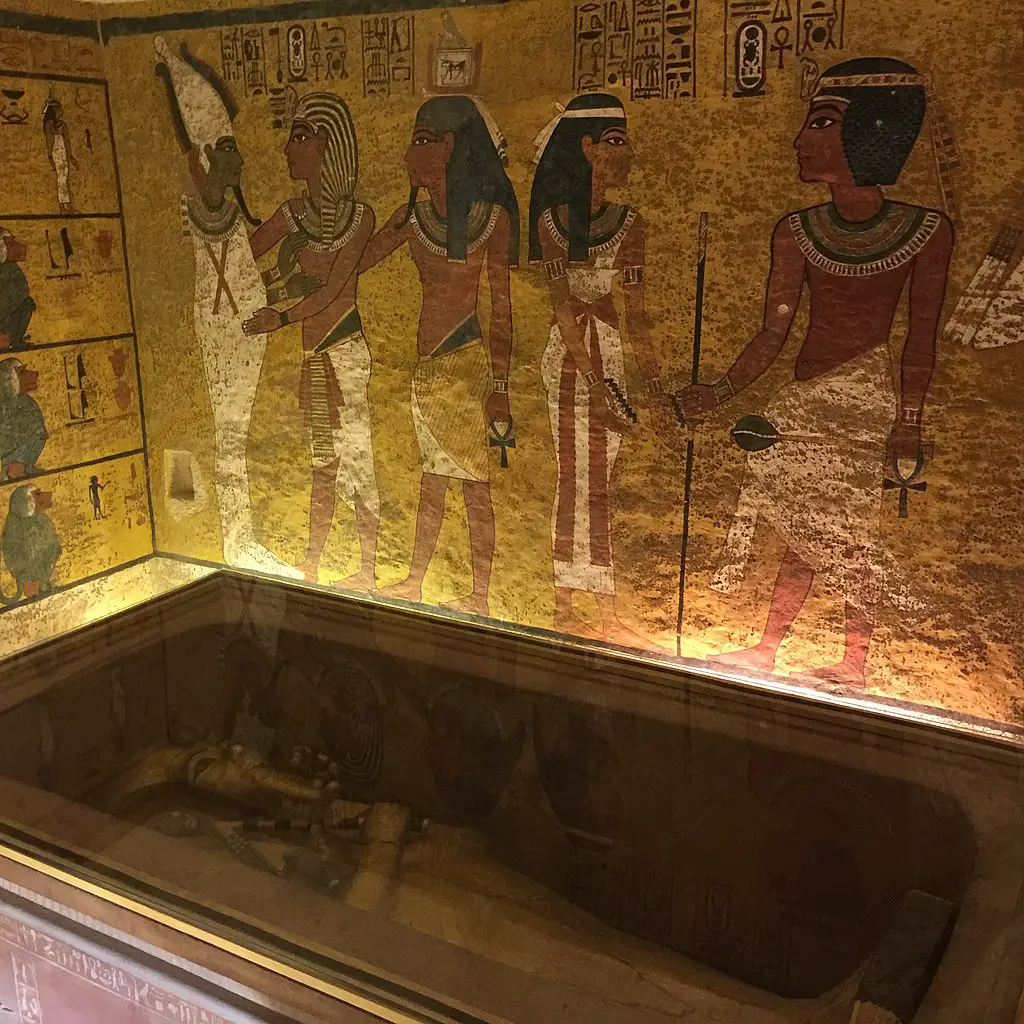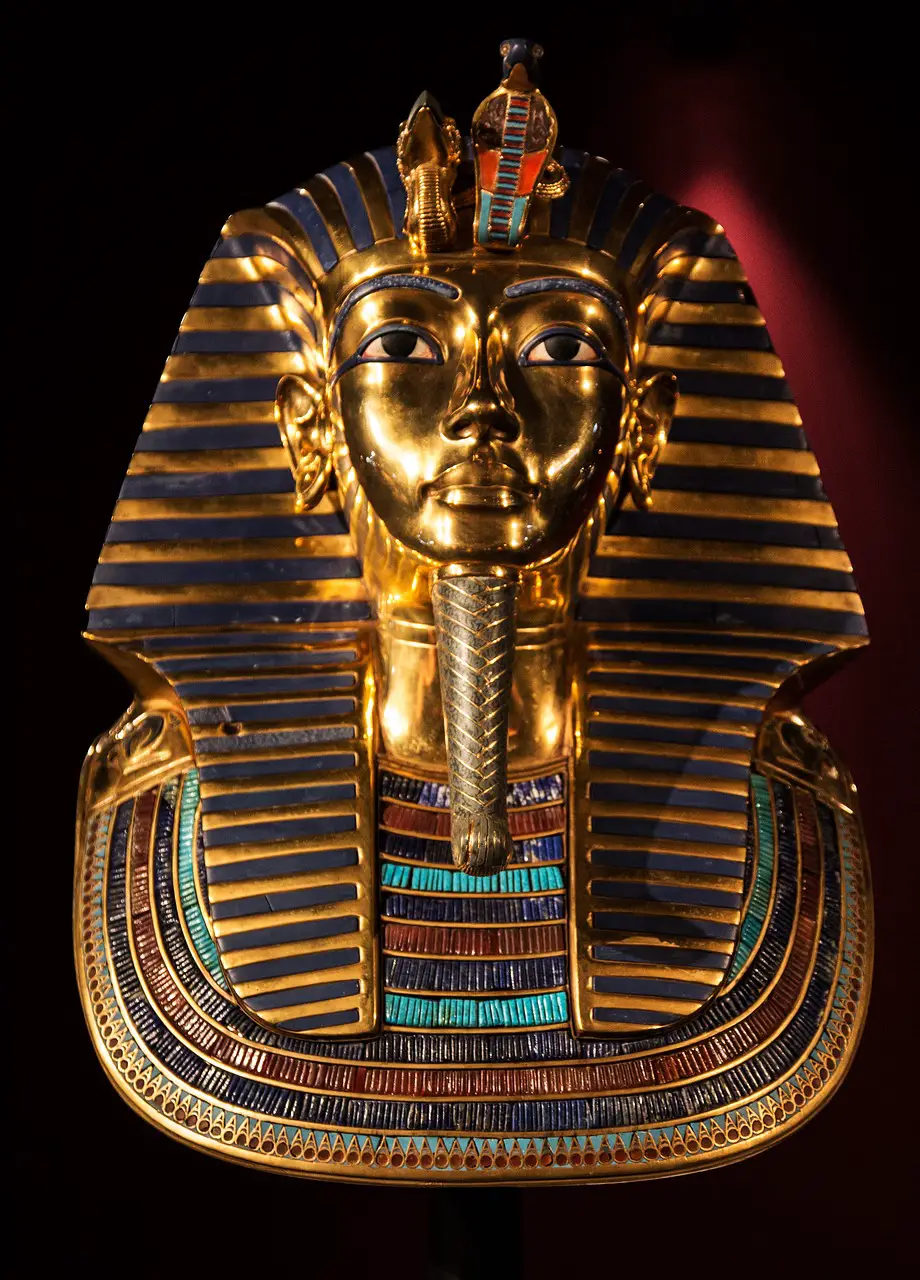
King Tutankhamun, or King Tut for short, is one of the most famous pharaohs in ancient Egyptian history. Despite only ruling for nine years, King Tut captured the imaginations of people worldwide with his mysterious death and the discovery of his tomb. In this article, we’ll take a deep dive into when King Tut was discovered, the contents of his tomb, and the impact his legacy has had on modern culture and Egyptology.
The search for King Tut’s tomb had been going on for years in the Valley of the Kings, but it wasn’t until 1922 that the British archaeologist Howard Carter and his sponsor, Lord Carnarvon, made their groundbreaking discovery. On November 4, 1922, they uncovered the entrance to King Tut’s tomb, KV62. It was the first time a royal tomb had been found completely intact in the Valley of the Kings.
Table of Contents
When Was King Tut Discovered?
King Tut was discovered on November 4, 1922, by British archaeologist Howard Carter and his team and sponsor, Lord Carnarvon, in the Valley of the Kings near Luxor, Egypt. The discovery of his tomb and its contents was a significant event in the field of Egyptology, revealing new insights into ancient Egyptian culture and providing a glimpse into the life and death of the young pharaoh.
The opening of the tomb was an event that would forever change the world’s understanding of ancient Egypt. Carter and Carnarvon discovered a burial chamber that contained four gilded shrines, a quartzite sarcophagus, and a mummy. The tomb was filled with treasures, including over 5,000 objects, including furniture, chariots, jewelry, and other artifacts.
The Contents Of King Tut’s Tomb
The discovery of King Tut’s tomb was an unparalleled event in archaeological history. The contents of the tomb provided an incredible insight into the life and death of a pharaoh, with objects ranging from the mundane to the extraordinary. Some of the most iconic artifacts discovered in the tomb include the golden mask of King Tut, which was placed over the mummy’s head. It’s made of solid gold and is considered one of the most recognizable symbols of ancient Egypt.
Another significant find in the tomb was a chariot, which was intricately designed and decorated. The discovery of the chariot allowed Egyptologists to learn more about ancient Egyptian technology and transportation. The tomb also contained several pieces of jewelry, including bracelets and necklaces, which were made from gold, lapis lazuli, and other precious materials.
King Tutankhamun’s Legacy

The discovery of King Tut’s tomb had a profound impact on modern culture and Egyptology. The artifacts found in the tomb provided a unique insight into the life and death of a pharaoh and helped us understand ancient Egyptian culture and traditions. The discovery of the tomb also inspired a renewed interest in ancient Egypt and spurred the growth of Egyptology as a field of study.
However, the excavation of King Tut’s tomb has been controversial, with some critics arguing that the excavation process was too hasty and that many of the artifacts were removed from their original context. The relocation of the artifacts to the Egyptian Museum in Cairo and, later, to the Grand Egyptian Museum has also sparked debate.
The Curse of King Tut’s Tomb
One of the most enduring myths surrounding King Tut’s tomb is the curse that supposedly befell those who entered it. According to legend, a curse was inscribed on the tomb’s entrance, warning of a “swift and terrible” fate for anyone who disturbed the pharaoh’s rest.
The curse myth gained traction after Lord Carnarvon, one of the tomb’s financiers, died shortly after the tomb’s discovery. Many other people involved in the excavation also died under mysterious circumstances, leading some to believe that the curse was real.
However, most modern archaeologists and historians believe that the curse was nothing more than a myth. The deaths of those involved in the excavation can be attributed to natural causes, and there is no evidence to support the idea that the tomb was cursed.
Conclusion
In conclusion, the discovery of King Tutankhamun’s tomb has had a significant impact on our understanding of ancient Egyptian history and culture. The artifacts found inside the tomb have given us a glimpse into the lavish life of a pharaoh during the New Kingdom period, as well as the intricate burial practices of ancient Egyptians. The mystery surrounding King Tut’s death and the curse of his tomb have captured the imagination of people around the world, adding to the fascination with this ancient king.
Despite the controversies surrounding the relocation of King Tut’s artifacts to the Grand Egyptian Museum, the legacy of this discovery remains relevant to this day. Scholars and archaeologists continue to study the artifacts and the tomb itself, uncovering new insights into ancient Egyptian civilization. The ongoing preservation efforts of King Tut’s tomb and artifacts ensure that future generations can learn from and appreciate the wonders of this ancient world.
King Tutankhamun may have only ruled for a short period, but his legacy lives on through the treasures found in his tomb. His story serves as a reminder of the rich history and culture of Egypt, and the endless discoveries that await those who explore its ancient wonders.